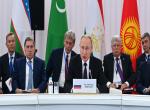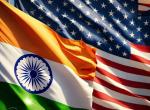The coming visit of President Xi Jinping is being viewed as a visit that could define the next decade of engagement between the two Asian giants. It is generally accepted that Sino-Indian relationship could turn out to be more important than the Sino-US engagement if leadership of both the countries were to cooperate and give substance to the conception that the locus of global economy and power has shifted to Asia. Notwithstanding the fact that there is dissonance between the two countries on a number of issues, both nations do share common perceptions on many of the international issues and especially so on the nature of the emerging world order.
Further, the visit also needs to be seen in the backdrop of the unprecedented two summit meetings between PM Li Keqiang and Manmohan Singh last year, recent visit of Vice President Hamid Ansari to China to celebrate 60 years of Panchsheel and not to be left behind the visit of Indian Army Chief Gen. Bikram Singh to China in first week of July (after a gap of 9 Years). All these engagements were topped by Xi and Modi meeting on the sidelines of BRICS where both leaders established a good rapport. These multifarious engagements have already brought to fore the Indian concerns and have indicated the direction in which both countries want to proceed further. One thing which is certain is that no dramatic breakthroughs in the relationship should be expected.
Modi’s mantra is development and growth and that has been the basis on which he has come to power. Having had firsthand experience during his visits to China as Gujarat Chief Minister, he has been thoroughly impressed by the development and economic growth of China and especially its infrastructure in terms of roads, ports, highways and some of the new cities and towns. Therefore, he is keen to conclude agreements with the visiting President regarding Chinese infrastructure companies undertaking projects in India. India is looking for infusion of China’s surplus funds in Indian infrastructure and in other avenues of investment. Though an MOU for setting up an Industrial Park has been signed by our Trade and Commerce Minister during Vice President Ansari’s visit to China, it is just a small step; Modi is looking for a framework agreement on investment by China. Modi is keen to push infrastructure development by the Chinese in Gujarat, Madhya Pradesh and Tamil Nadu.
India’s requirements of funds are a huge one trillion US dollars as per its current Five Year Plan and it is hoped that China can contribute possibly 30 percent of such requirement over a period of time. But a Sino-Indian agreement for anything closer to 30 billion USD or even somewhat lesser amount in the coming visit could be a game changer. There would be some problems like the absorption capacities and many other difficulties connected with the local environment but all such issues can be overcome provided the political will is there from both sides. Recently, a country like UK offered 1 billion pounds (around 1.75 billion USD) for infrastructure development in India. Obviously, China’s capacities are much beyond this amount.
Second agreement that could give a positive momentum to Sino-Indian ties needs to be in the field of trade and commerce. The trade imbalance between the two nations is now to the tune of around 35 billion USD which needs to be addressed. In all the previous top level political engagements, while promises have been made to come to grips with the issue, no substantial progress has been made. Therefore, in the coming visit, New Delhi is looking forward to an agreement that grants greater access of Indian goods and services to the Chinese market, for instance Indian pharmaceutical products, IT enabled services, cotton textiles & home furnishings etc. There are many non-tariff barriers on Indian exports of goods and services. Removal of these would enable India to close the trade gap; though it is also not expected that the trade should always be balanced yet another way is that China invests in India. Under the present circumstances, it appears unlikely that the projected bilateral trade figure of 100 billion USD by 2015 can be achieved.
Thirdly, whenever a bilateral visit takes place, there is a pattern of behavior from China’s side which needs to be avoided. Such a behavior has been exhibited with regularity on the eve of all previous political visits. Before the Indian Vice President’s visit, a controversial map was released by China besides transgression by PLA troops in Pangong Lake. Last year before PM Li Keqiang’s visit to New Delhi, there was the Depsang valley intrusion. In fact, it is difficult to recall any visit where before the event there has been no negative incident. Largely, the perception is that such events/incidents are deliberately planned to put Indian decision-makers on the back foot and in order to test their resolve.
Though it may not be necessary to have any written agreement on the above aspect, both leaders can reach an understanding that such incidents should be avoided in order to give positive atmospherics to the bilateral meets.
While many agreements have been signed culminating into Border Area Development Cooperation (BADC) agreement of 2013, the border incidents continue to take place. Several incursions in Ladakh sector by Chinese troops have taken place since January 2014. PLA’s posture has become increasingly very assertive and it has been attempting to expand its claimed areas (which are in any case ill-defined). After the signing of BADC, such incidents should have been a rarity; both leaders need to reach an understanding on the same and need to enforce their writ; any fresh formal agreement on the issue would not be of any avail if the previous agreements are not adhered to in their true spirit. There is a need to arrive at a mutual modus vivendi on the issue. Peace and tranquility along the border remains an important element for growth and development. This has been recognized so in the previous agreements.
Fourthly is the question of lack of Chinese sensitivity to India’s core concern of Kashmir issue. Since nineties till 2005, China had been following somewhat of a neutral approach but after 2005 or so, there has been perceptible difference in China’s approach with its tilt towards Pakistan. China’s developmental and other activities in Pakistan occupied Kashmir have a negative impact on India’s security. It also needs to be remembered that even Pakistan considers Kashmir as disputed therefore; if China wants to reduce dissonance with India, then China’s return to a neutral stand would add to positivity of Sino-Indian relationship.
Fifth is the Tibet question. This year is being celebrated as the 60th year of Panchsheel Agreement. India is not much enamored with the Panchsheel Agreement as it recognized China’s suzerainty over Tibet without any concession to India in the bargain. It is considered as a lack of strategic vision on part of Nehru. While the Five principles of peaceful coexistence are quite all right, it was the preamble of the agreement that became more significant than the clauses in the main text. The fact that India was represented at the celebratory event in China by its Vice President is also some kind of message that Panchsheel does not hold that level of significance. In the bilateral summits for last three years or so, even though India has been adhering to one China policy, the same is not being mentioned in the Joint Communiques issued after the summits. This has been largely as a response to China’s failure to recognize Jammu & Kashmir as part of India. There have been many other irritants like the stapled visas issue to residents of Arunachal Pradesh.
Further, the presence of Lobsang Sangay, Kalon Tripa / Sikyong of Tibet Administration at Modi’s swearing ceremony also indicates the current government’s stance in some measure though there is no change in Indian government’s policy that Tibetans cannot carry out any political activities in India etc.
Another significant issue that needs further discussions is the damming activities on Yarlung Tsangpo/Brahmaputra River; some discussions took place during VP Hamid Ansari’s visit to Beijing; the two governments signed an implementation plan on provision of hydrological information on the Brahmaputra River in flood seasons by China and India. Expansion in areas of cooperation in this field has to take note of the interests of lower riparian nations like Bangladesh and India. So far Chinese policies on the issue are not conducive to good relationship.
Coming to the regional situation, the most important issue would be that of Afghanistan post 2014. Both sides largely share similar perceptions on the emerging scenario and have common concerns on the security implications of the unfolding scenario. There is a JWG on the subject; both sides are expected to explore practical ways of cooperating in Afghanistan so that peace and stability is brought to that nation. However, on the question of terrorism, China still continues to see through Pakistani prism. While the Americans, the Western nations and possibly the Chinese have seen through the double game of Pakistan, they feel constrained to take any action against Pakistan for a number of geo-strategic reasons. The negative role of Pakistan needs to be recognized by China otherwise peace and stability in the region including in Xinjiang would remain elusive.
While at the international level, both nations largely identify with each other’s aims, objectives and interests in the multilateral forums, on climate and trade issues, WTO etc. yet, China is yet to endorse India becoming a permanent member of UNSC as also a member of the Nuclear Suppliers Group. Meanwhile, China led by President Xi Jinping has become increasingly aggressive and assertive in Asia both militarily and economically indicating that it aspires for leadership role in Asia. Promotion of a number economic corridors and silk roads, offering funding by establishing Asian Infrastructure Development Fund, Shanghai Cooperation Organisation Development Fund and many other economic initiatives by China are aimed to enhance its strategic presence.
On the other hand, China needs India on its side for the success of its view of the new Asian security architecture where according to Chinese perceptions the US and the others have no role. India favours a strategic equilibrium in Asia whereas China is anti-status quo aspiring to dominate the Asian firmament. Thus, Modi’s visit to Japan, Australian PM Abbot’s visit to India before President Xi’s visit and later Modi’s visit to the US need to be seen in the context of India attempting to balance the emerging strategic equations.
Overall, the forthcoming visit of President Xi is unlikely to change the fundamental nature of Sino-Indian relationship as China is not ready to relent on issues considered by India to be part of its core national interests. Some advances on economic and connected issues are possible. Modi’s approach includes management of the conflict areas between the two nations while at the same time striving to have enhanced economic, political, diplomatic and people to people engagements.
Published in Vivek: Issues & Options, July-Aug 2014
(Disclaimer: The views and opinions expressed in this article are those of the author and do not necessarily reflect the official policy or position of the Vivekananda International Foundation)









Post new comment